Are You Using The Best Oscilloscope For That Application?
By Lisa Clark
Oscilloscopes are used in electronic testing to observe varying voltages in a signal and then plots those voltages against time through graphical representation. This allows signal voltages to be viewed, usually as a two-dimensional graph of one or more electrical potential differences (vertical axis), plotted as a function of time or of some other voltage (horizontal axis). Oscilloscopes even can perform analysis over non-electrical signals by converting sound or vibration into voltages, as in medical and automotive industry applications.
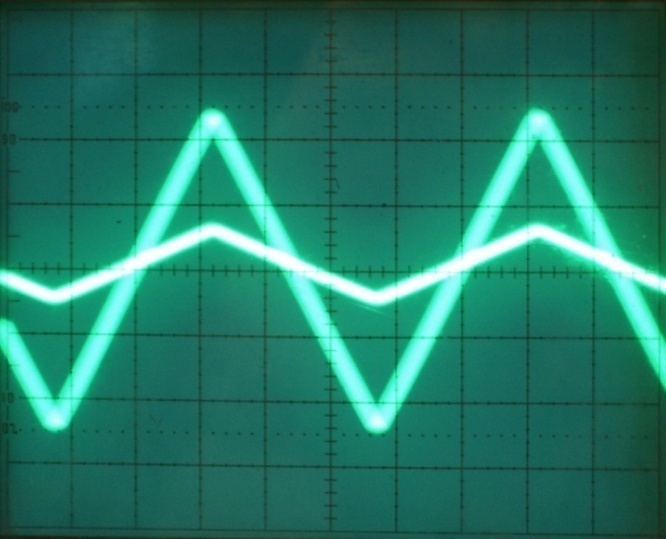 Oscilloscopes’ importance derives from their usefulness in giving an understanding of what is happening in the electronic circuit. Further, they allow for observation of constantly fluctuating signal voltages. This is done by displaying the waveforms formed due to changes in electric signal over a calibrated scale. The waveform can then be analyzed for properties like frequency, rise time, interval, and amplitude.
Oscilloscopes’ importance derives from their usefulness in giving an understanding of what is happening in the electronic circuit. Further, they allow for observation of constantly fluctuating signal voltages. This is done by displaying the waveforms formed due to changes in electric signal over a calibrated scale. The waveform can then be analyzed for properties like frequency, rise time, interval, and amplitude.
But the quality that makes oscilloscopes invaluable in any electronic laboratory is their range of utility. While all oscilloscopes perform the same essential function and follow the same central principles, there are several specialized instruments used in various applications. In this article, we give you a bird’s-eye view of different types of oscilloscopes.
Different Scopes For Different Folks
To choose the best oscilloscope for the application at hand, one first needs to understand the types of oscilloscopes available. For example, although oscilloscopes are predominantly used for troubleshooting, a few types can miss a signal when there is too much flux in the voltage. Also, since some oscilloscopes are adapted to assessing sound or vibration, they may be used in a totally different context.
Analog Oscilloscopes
Components Expert Matthew Burris says that analog scopes are a “great option for hobbyists and beginners” because of the low cost and reliability in troubleshooting.
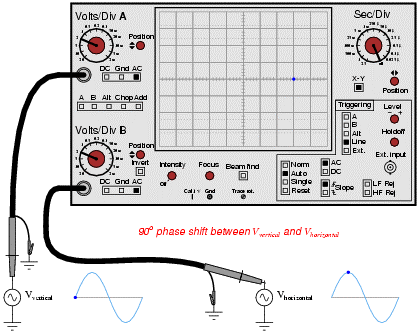 Analog oscilloscopes are the oldest incarnation, though, and can be difficult to find. These scopes directly display the signal picked up by their probes and then trace it on the display. Most of them include a storage feature, as well. This capacity allows analog oscilloscopes to hold the trace pattern on the display longer than the several-second window seen in advanced scopes. To erase this trace from the display, an electrical circuit has to be deliberately triggered.
Analog oscilloscopes are the oldest incarnation, though, and can be difficult to find. These scopes directly display the signal picked up by their probes and then trace it on the display. Most of them include a storage feature, as well. This capacity allows analog oscilloscopes to hold the trace pattern on the display longer than the several-second window seen in advanced scopes. To erase this trace from the display, an electrical circuit has to be deliberately triggered.
Applications
Analog oscilloscopes stand out as exclusive instruments when they deal with analog signals and effects that are transient. Modulating, video, and audio signals also work well with analog scopes because of the scopes’ ability to handle low-speed digital signals. These signals show up best on CRT. Analogs also provide a range superior to modern oscilloscopes, and they usually do not experience aliasing issues that can cause false reactions.
Digital Oscilloscopes
Digital oscilloscopes conceptually differ from their analog counterparts, with the most obvious difference being the former’s conversion of signals into digital formats before processing. Once digitization is applied, the devices’ powerful hardware and software enables testing flexibility through diverse special features. Digital Oscilloscopes are expensive, though, and many users rent such oscilloscopes from electronics test-and-measurement suppliers like Tektronix, TRS RenTelco, Rohde & Schwarz, Fluke Networks, and others.
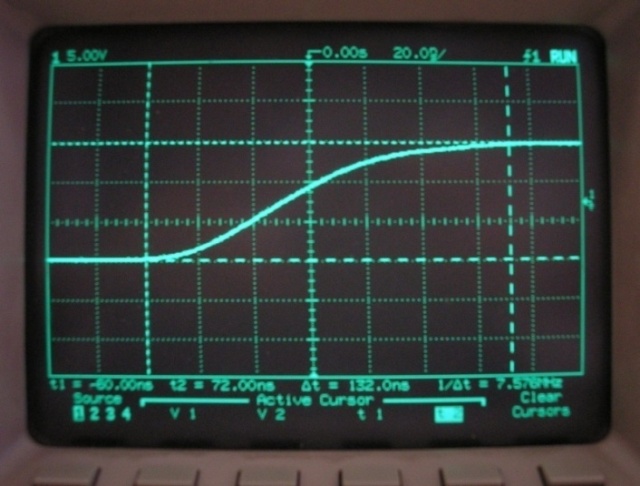 Digital storage oscilloscopes and general digital oscilloscopes are used synonymously, since they serve the same basic function. They arrest signals in flux and save them for later analysis, archival, etc. They basically convert the input signal into a digital format at a sample time, and then return it to an analog format for display on LCD.
Digital storage oscilloscopes and general digital oscilloscopes are used synonymously, since they serve the same basic function. They arrest signals in flux and save them for later analysis, archival, etc. They basically convert the input signal into a digital format at a sample time, and then return it to an analog format for display on LCD.
They also have a built-in storage system to record signals, which can later be shifted to digital or other media for analysis. Unlike their analog counterparts, digital scopes do not display similar intensity in detecting real-time electrical signals. However, they are very popular because of their efficiency in dealing with many signals together.
Applications
Digital oscilloscopes are critical in the manufacture and repair of electronic equipment. When used with a suitable sensor, these scopes can capture all sorts of phenomena — be it sound, heat, light, stress, or pressure. For example, they can be used in the medical field to capture and measure brain waves, and automobile engineers can use them to correct sensor data from the engine control unit (ECU).
Advanced Digital Scope Functions
Digital scopes allow for many triggering options that were not previously possible, helping to observe waveform changes on the display screen in a steady manner. While analog triggers allow for basic trigger viewing, digital oscilloscopes feature advanced trigger options, such as A&B triggering, search-and-mark, corrections in trigger, and serial pattern triggering. With regard to A&B triggering, although many traditional scopes offer triggering from channel A to channel B, they do not offer complex triggering, such as logic qualification for control or delayed timing. Advanced triggering function also allows from correction of trigger delays. This is very useful in high-speed systems where signal paths, data acquisition, and trigger position have inherent time differences.
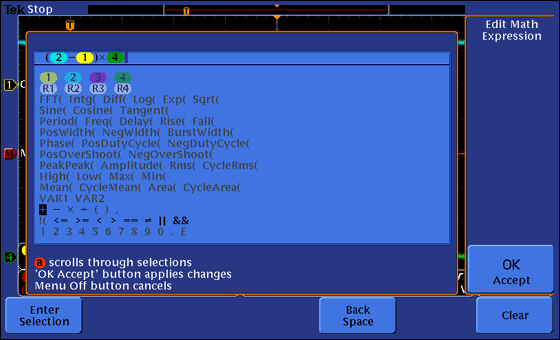 Many digital oscilloscopes also support math functions. Simple waveform math allows for basic calculations like A+B, but scopes exist with advanced mathematical abilities, too, such as inversion, trigonometry, exponentials, logarithms, and integrals. Such scopes also allow for live signal plotting along a record of peaks and their average calculations.
Many digital oscilloscopes also support math functions. Simple waveform math allows for basic calculations like A+B, but scopes exist with advanced mathematical abilities, too, such as inversion, trigonometry, exponentials, logarithms, and integrals. Such scopes also allow for live signal plotting along a record of peaks and their average calculations.
Finally, advanced digital oscilloscopes are embedded with fast Fourier transform (FFT) math function, which gives scopes the ability to display the frequency of a signal alongside the amplitude of these frequencies. FFT analysis over a signal is a great tool for addressing issues relating to EMI, RFI, and oscillations in the circuit being tested. FFT analysis also helps in viewing the harmonic content of waveforms, thus making it useful in identifying switching power supply problems. Even distortions in analog circuitry nonlinear operations can be easily traced using this function.
Digital Phosphor Oscilloscopes
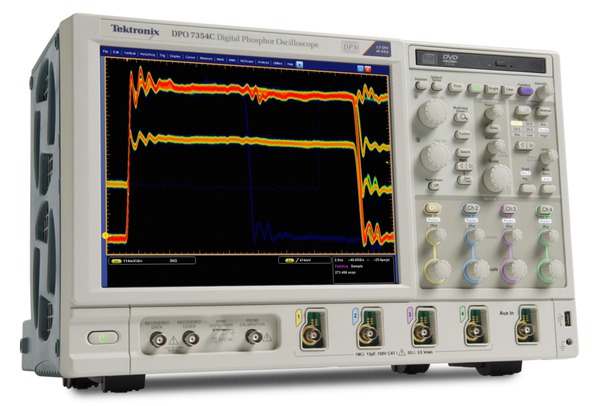 A parallel processing architecture is added to a digital oscilloscope to enable capture and display of signals that would not have been otherwise possible. A parallel processor lets the digital phosphor oscilloscope (DPO) easily capture events that are transient, such as spurious pulses and errors in transition, making the DPO a very versatile device. Contrary to its name, the DPO does not always use a chemical phosphor in its modern varieties and instead employs a digital display.
A parallel processing architecture is added to a digital oscilloscope to enable capture and display of signals that would not have been otherwise possible. A parallel processor lets the digital phosphor oscilloscope (DPO) easily capture events that are transient, such as spurious pulses and errors in transition, making the DPO a very versatile device. Contrary to its name, the DPO does not always use a chemical phosphor in its modern varieties and instead employs a digital display.
DPOs also have similar display attributes to analog oscilloscopes, in terms of displaying signal in time, amplitude, and distribution dimensions in real-time. By using a parallel processor, DPOs are able to store waveforms without constraint from the display systems. This results in a real-time display of the captured transient events and waveforms, thus contributing to greater accuracy of troubleshooting in digital systems.
Applications
DPOs are ideal for locating glitches in large digital systems. For instance, design engineers can use these scopes to debug their designs and to locate problems quickly. DPOs also are used for serial data triggering and analysis in embedded design.
Mixed Domain Oscilloscope (MDO)
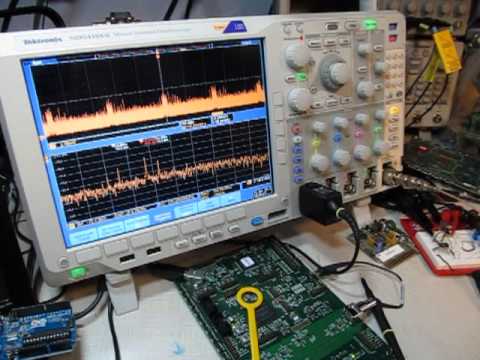 MDOs are a combination of analyzer functions, with a regular digital oscilloscope that helps in troubleshooting, debugging, and testing in cases where the signals are correlated in time. The instrument also combines a spectrum and a logic analyzer to enable a user dealing with digital signal, RF communications, and digital logic to work efficiently. Thus, it becomes an indispensible tool for observing correlated signals from every domain parallel to the analog, RF, and logic signals.
MDOs are a combination of analyzer functions, with a regular digital oscilloscope that helps in troubleshooting, debugging, and testing in cases where the signals are correlated in time. The instrument also combines a spectrum and a logic analyzer to enable a user dealing with digital signal, RF communications, and digital logic to work efficiently. Thus, it becomes an indispensible tool for observing correlated signals from every domain parallel to the analog, RF, and logic signals.
Applications
MDOs are used in applications where time and frequency domains need to be viewed on a single instrument. Thus, these scopes are ideal for applications involving integrated views and for debugging complex designs. MDOs let engineers view what’s happening in their designs at any point of time.
MDOs also are embedded with digital multi-meter (DMM) functions, which allow them to measure multiple signals and to inspect them. And, they are built for a heavy industrial environment, making them the best tool for engineers working with on-site troubleshooting and testing.
Some MDOs also possess function generators and are widely used in the education, research, and design industries. They can provide stimulus output waveforms to the device being tested, even in user-chosen frequency and amplitude. Such arrangement allows for the scope to capture a known waveform on the channel, save it, and generate it using a BNC output. This allows for testing of margins to their breaking point, and it is helpful in research and designing.
Some MDOs also feature a spectrum analyzer mode dedicated to frequency domain analysis. This is a powerful ability when troubleshooting frequency related issues in the system. This equipment usually comes with spectrogram display unit that shows the spectra history and its changes against time. The key advantage of a spectrum analyzer is that the dynamic and wide range on the spectrum can be easily observed.
Mixed Signal Oscilloscope (MSO)
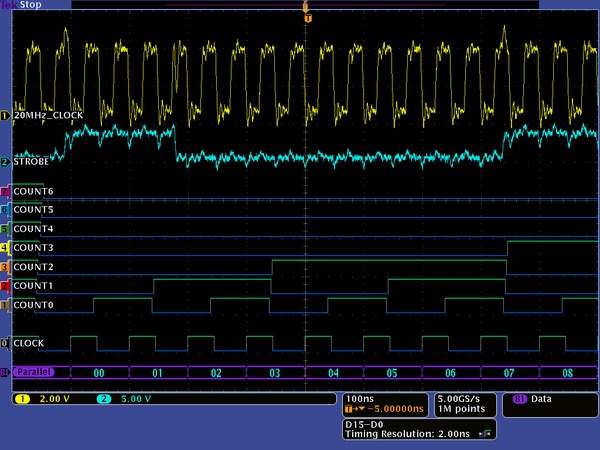 In a mixed signal oscilloscope, there are two types of inputs, a number of analog channels, and many more digital channels. This makes an MSO capable of digital oscilloscope functions and those of conventional logical analyzers, although it operates purely as an oscilloscope in the latter role. This arrangement is efficient because the user only needs one device to perform dual functions.
In a mixed signal oscilloscope, there are two types of inputs, a number of analog channels, and many more digital channels. This makes an MSO capable of digital oscilloscope functions and those of conventional logical analyzers, although it operates purely as an oscilloscope in the latter role. This arrangement is efficient because the user only needs one device to perform dual functions.
According to Martin Rowe, senior technical editor at EE Times, MSOs are a combination of analog input units and logic inputs; analog inputs offer higher resolution than logic inputs, allowing the observer to only see the logic levels.
Applications
MSOs are used in the automotive industry, power electronics, embedded systems, and in mechatronics. They can decode low-speed serial buses with their analog channels, a capability useful to engineers working with low-speed problems. Many high-speed digital buses face issues with low-speed signals, such as EMI or integrity problems in the signals, and MSOs are ideal for testing such issues.
Other Oscilloscopes
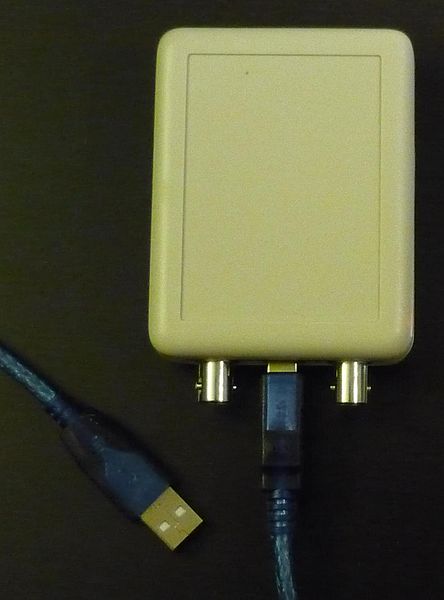 Oscilloscopes are widely used devices, and their applications are growing as technology advances. They are being integrated with advanced processors to handle various high-range testing applications. Some of these new oscilloscopes include handheld and USB-oscilloscopes, while computer-based oscilloscopes are replacing the traditional bench-based oscilloscope.
Oscilloscopes are widely used devices, and their applications are growing as technology advances. They are being integrated with advanced processors to handle various high-range testing applications. Some of these new oscilloscopes include handheld and USB-oscilloscopes, while computer-based oscilloscopes are replacing the traditional bench-based oscilloscope.
USB-oscilloscopes have been especially popular, since they enhance inter-device connectivity. They are usually small enough to be carried in a laptop case or a tool bag, and can be powered by a laptop or PC.
Handheld oscilloscopes have evolved to become portable oscilloscopes that can detect problems graphically. They can display multiple isolated channels and offer substantial battery life, making them ideal for portable use. They can safely make differential or floating measurements in the field, making them a preferred tool in avionics, plant maintenance, process control, field servicing, and maintenance of medical equipment.
Advances In Oscilloscope Technology
In the past few years, high-speed DRAM, high-speed processors, and integrated chips powered by silicon germanium (SiGe) have improved oscilloscope performance significantly. Innovative hardware and DSP combinations also have shown promise for better signal integrity.
As technology and user expertise evolves, oscilloscopes may soon recognize voice commands. Scopes with waveform updates at the rate of 45,000-per-second — or more — could capture even the most elusive glitches. Consumer influence could lead to scope interfaces very similar to smartphones, as well as the use of apps and mobile devices to control scopes.
